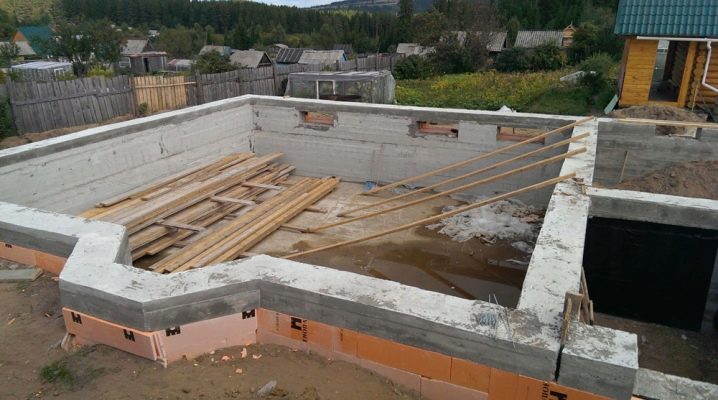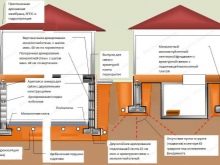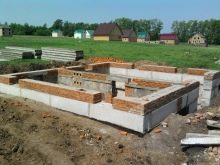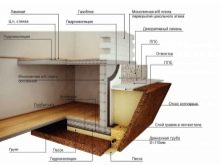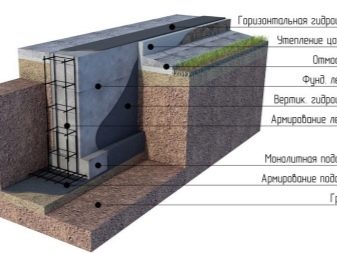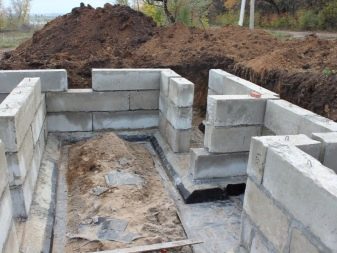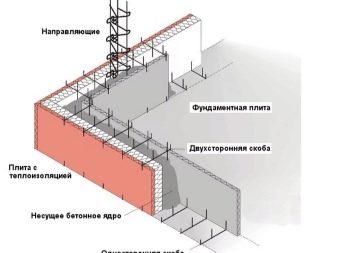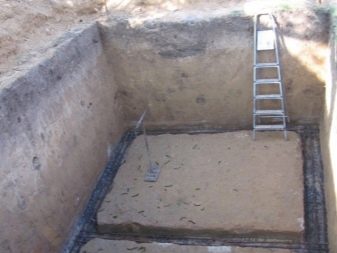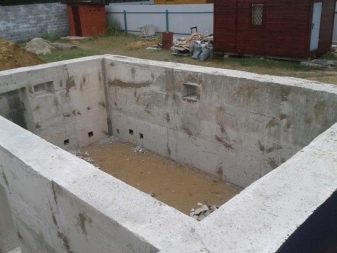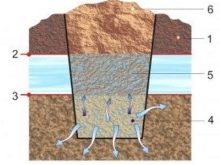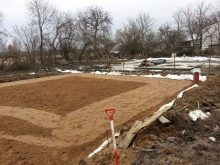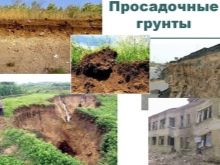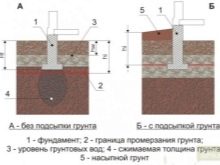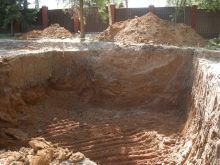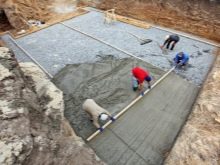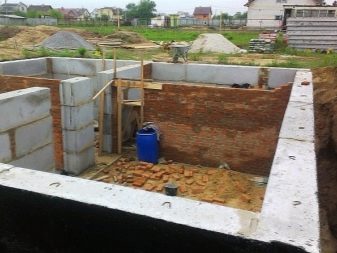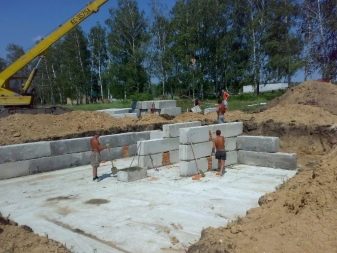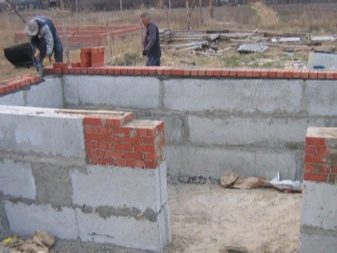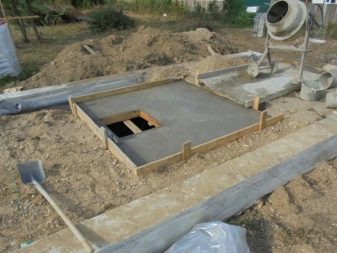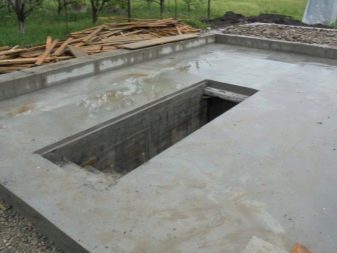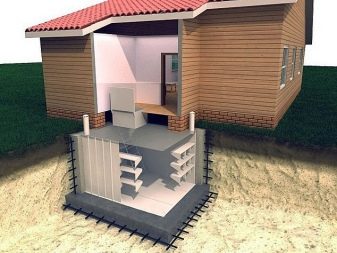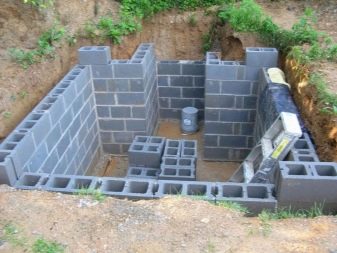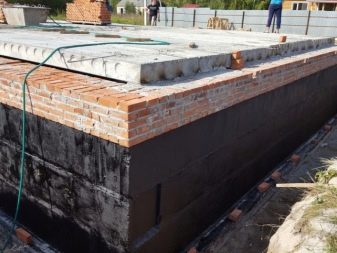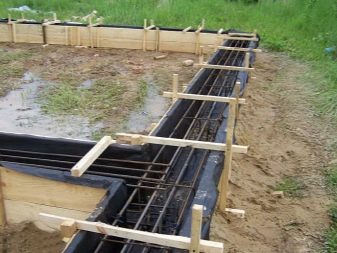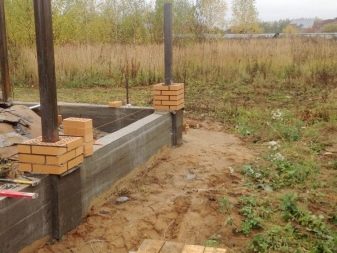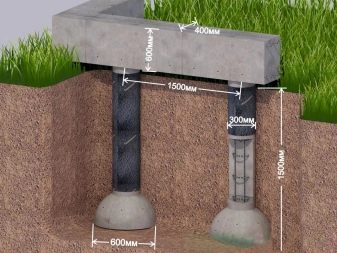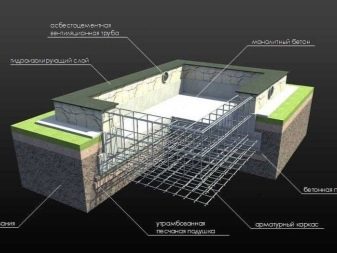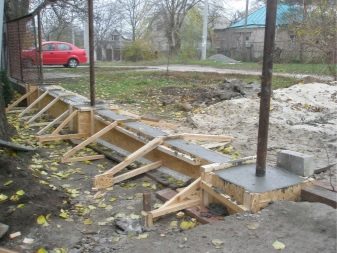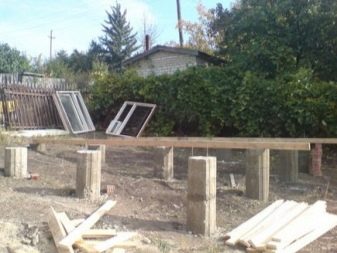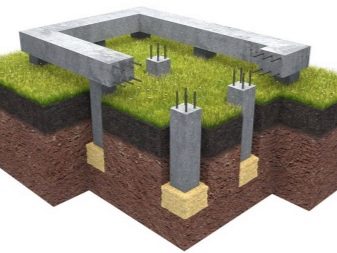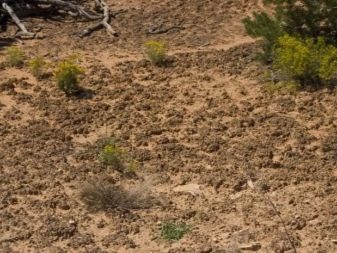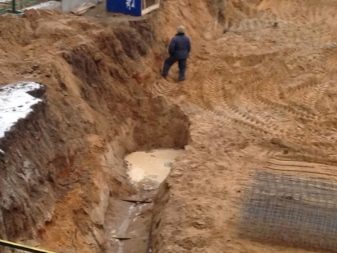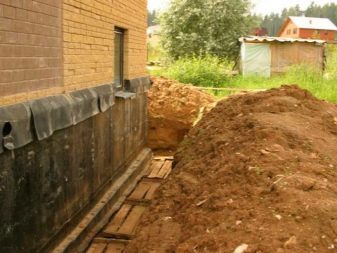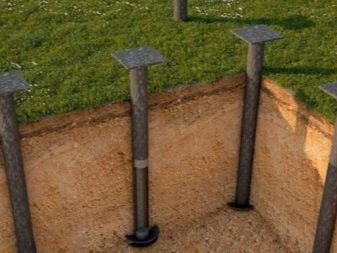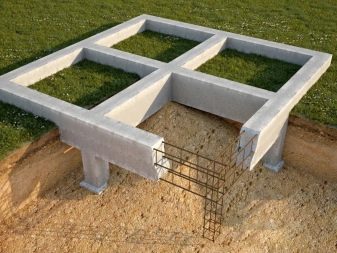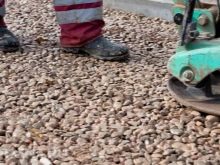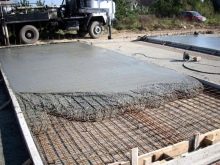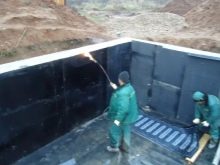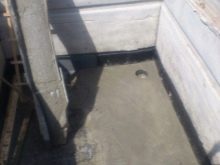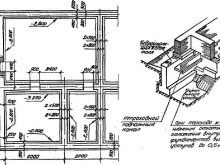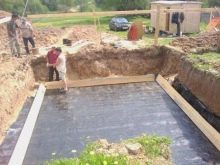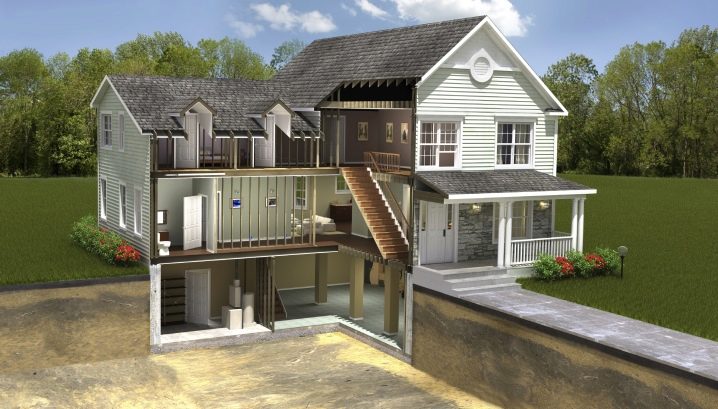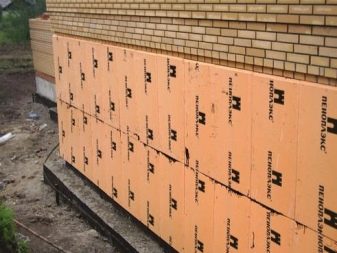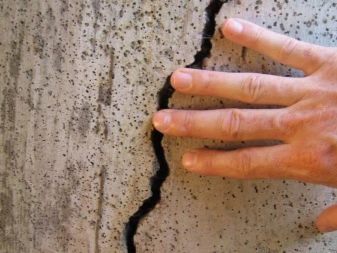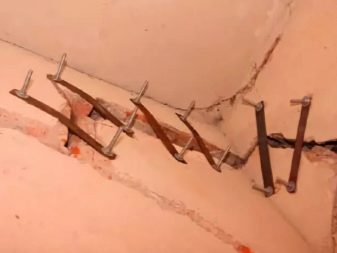Basement construction technology with basement
In some cases, homeowners lack the facilities that are located on the surface. This problem seems to be solved simply by organizing a basement. But it is important to consider that each such case requires a modification of the foundation of the house.
Special features
The basement with the basement inevitably goes more expensive and more complicated than a simple analogue. The volume of earthworks increases, the consumption of construction materials increases. More need to pay attention to the prevention of water penetration and condensation. For your information: the foundations designed for the basement, regardless of the properties of the soil and the gravity of the building, are made in-depth.
The calculations take into account the level of standing of groundwater and the characteristics of the land in a particular place.
Kinds
Before you make a basement in the house, you need to deal with the appearance of the foundation under it. Most often make the base ribbon. The final choice is made after studying the mechanical and heaving properties of the soil.
Important: the tape can be not only monolithic, but also the national team on execution.
The use of ready-made blocks radically saves time and allows you not to fear the poor quality of work. Monolithic ribbons are necessarily formed with formwork, and it is necessary to pour concrete into it strictly at one time.
In any case, the need for mortar and other materials is clarified by special calculations. Be sure to mark out the construction site to avoid problems. The foundation pit under the tape is made as even as possible, and at the bottom lay layers of rubble and sand, which will have to be thoroughly rammed. For formwork, durable wooden planks with a minimum thickness of 25 mm are allowed. The tape is usually reinforced with metal rods with a cross section of 1.2-1.6 cm.
It is necessary to avoid the frame elements going out of the foundation. And ideally, their ends should be buried by 30 mm or so. Particular attention is paid to strengthening the corners and the lowest points. Waterproofing tapes produced bitumen, roofing felt or more modern materials. The strip foundation can be used even for a basement with a cellar.
This solution allows you to save food and other perishable things, regardless of the availability of electricity, in any season of the year. Even if the refrigerator breaks down, the cellar can help out. And just the tape base is best suited for this purpose. If the foundation is made using slab technology, you will either have to completely abandon the cellar or equip it outside the main house.
In any case, some kind of structure should be equipped above the cellars, this will allow to improve ventilation and increase the drying efficiency.
A simple basement (without a cellar) can be erected on a monolithic slab. This practice is best suited for complicated soils, that is:
- heaving;
- sagging;
- actively compressible and so on.
The classic slab pattern requires lowering the foundation deeper than it freezes through the ground. In the floating version of the mount is made at 0.6-0.8 m below the surface of the earth, regardless of the freezing. The pit will have to dig 2 m more than the estimated slab in all directions. Having reserved this place, it will be much easier to carry out foundation work. The bottom of the pit is required to tamp carefully.
Having filled up the pillow, proceed to the formation of footings, that is, screeds 4 cm thick. Actually concreting is carried out using sand concrete M300. Crushed stone should be watered with portions of this solution, and not all of them at once, the only way to get a kind of “crust”. When the pre-screed is formed, you can do waterproofing. For it use mainly rolled materials on a bitumen basis.
An alternative to the solutions described is founding a basement basement of FBS blocks. This design has three advantages:
- increases the useful area of the house;
- makes the building more stable;
- increases energy efficiency, since the walls of the underground space are insulated.
Foundation blocks differ and adapt to the size of buildings. But according to experts, it is most convenient to use the largest products, and all the others are best used as additional parts. The fact is that no calculations and careful preparations make it possible to avoid the occurrence of voids and a shortage in length. FBS is characterized by perfect safety for human health and the environment. This material will not accumulate fungal foci and will not be affected by microbial colonies.
As for the shortcomings of FBS, it is worth remembering about their high price. However, due to the absence of fittings, the construction fee is 1 cu. m is still less than when using solid slabs. More seriously the fact that the joints can not be sealed to 100%. Bulk foundation options are much better tolerated by contact with groundwater and with water-saturated soils. It is also important to remember that FBS is heavy, normal work with them without the help of automobile cranes and trained installers is impossible.
In some cases, basements are placed in a depression below the base of the basement. This is done if the basement was not originally equipped, but then it became necessary. This can be done only when using tapes or piles. Going under the plate is strictly unacceptable. This can even result in the destruction of an entire house or other structure.
It is very difficult to prepare a notch under the basement below the foundation. It will be necessary to remove significant amounts of earth and strengthen the sole. Additionally, you will need to make a sand filling for future floors, pour concrete there, trim the walls, stretch the wiring and install electrical appliances. According to statistics, the construction of a basement in an already operated house will cost twice as much as building it at the same time as a dwelling (and this is also the minimum estimate).
It is preliminary recommended to estimate how deeply the moisture is in the soil; control is carried out by digging holes in the hottest day of the year.
The markup for the future basement is adjusted for the thickness of the external walls. Most cellars are made in the format of 2x3x2 m - more serious dimensions are not always needed. It will be necessary to disassemble the screed in accordance with the markup, and only then take up the excavation work.The walls must be covered with double-layer waterproofing based on any roll material.
When concreting it is permissible to use both removable and one-piece formwork.
In real construction practice, a combined foundation is often found instead of a clean tape, slab, or pile foundation. There are various schemes how to make it:
- place a block construction on a monolithic cushion;
- instead of the grillage, tie up the piles with high-placed tape;
- put bricks or blocks in between the pillars;
- to make a support plate on the pile (instead of the usual sandy flooring).
The formation of a layer of monolithic reinforced concrete around the perimeter of the foundation, made of piece parts, allows you to guarantee the reliability of the structure and combine its various parts. The combination of tape and pillars makes it possible to strengthen the support of the tape base. For weak soils or for soil prone to heaving, this is the best option. In the end, it will even turn out to build a heavy-weight house on a plot with a rough movement of the soil horizontally. The load created will be distributed evenly, including such complex cases as building on the slopes.
Important: the combination of different types of foundation under one building must be approved by professionals.
Attempts to independently gather information are unlikely to make the right decision. And in the best case, then you will receive unnecessary delays in construction, excessive earthworks and other additional expenses. Separate miscalculations can even reduce the life of the house and even lead to its premature destruction. If the characteristics of the merged blocks are not combined, there are sometimes cracks between them.
The columnar foundation under the private house attracts the attention of developers with minimal cost, ease and lack of special requirements for the experience of builders. The strongest and most stable pillars are structures based on monolithic reinforced concrete. Only they should be used where heaving of the soil is aggravated by high-standing groundwater. Usually it is customary to put pillars in the corners, at the intersections of the walls between themselves and with the walls.
Additional reinforcement is made if the gap when placing supports in accordance with the basic rule is more than 3 m.When building a heavy house, it is required to bring the supports together, but you should not put them closer than 1 m to each other, this will only create unnecessary costs without adequate recoil strength. As the cross beam, extinguishing the likely uneven shrinkage, can use the grillage and tape with a slight depth.
Construction in such formats and the use of foundation blocks does not exhaust the possibilities to make a basement under a house with a basement. We still need to think about the pile foundation, which in some situations turns out to be an ideal choice for developers. Such a solution is recommended if, when advancing in depth, the soil only weakens instead of the expected hardening.
To dig a ditch for tens of meters under a private house is impractical, where it is more accurate to use just piles. They are actively used on weak soils:
- rich in humus and peat;
- like loess;
- quicksand;
- plastic loam.
But in very dense soil, pile structures are also useful. They reduce the complexity of the work and the need for concreting the foundation. Now there are many types of piles and modes of their application.In order to avoid unnecessary problems, it is best to consult with experts. Without any consultation, it is clear, however, that the wood should be left in case of emergency. Even with solid treatment with protective drugs, it serves too little.
Steel products of large size can not be mounted without cranes.
In any case, you will have to spend money on careful anti-corrosion treatment. It is necessary to take into account the increased costs of the metal. Reinforced concrete structures are considered the best choice. You can make them on the construction site itself, if there is a suitable tool and minimal skills. Having made the piles of reinforced concrete according to all the rules, you can expect that they will last at least 100 years.
How to build with your own hands?
The construction technology for step-by-step instructions after digging the pit is:
- backfill of gravel and sand;
- spill cement screed;
- water protection;
- forming the foundation for the foundation;
- preparation of drainage (at close overlying groundwater);
- basement overlap with additional waterproofing.
Independent work is good because it helps to save money on the salaries of professionals.But first you have to calculate everything thoroughly. If some kind of work can be done manually and with the help of special equipment, it is better to prefer the mechanized version. Expenses for payment of equipment or help of masters will soon be justified by a significant improvement in quality. It is advisable to carry out any work with cement casting in one working day, otherwise the strength properties will be unsatisfactory.
Important: the foundation with the basement will not be able to build without large-scale earthworks. And because the order of trucks for the removal of withdrawn soil is necessary in any case.
After the excavator has completed its work, the bottom and walls of the pit will need to be compacted by tamping. It is necessary to calculate the walls and floor in the basement, only then it will be of high quality inside and out. Those who build such structures without calculations are in a losing position.
When calculating take into account:
- whether the reinforcement of the wall is put in the foundation;
- whether the filling ground is brought to the top of the wall;
- how the overlap is made;
- Are engineering and geological conditions difficult during construction?
- what factors are valid in the area.
In most cases, the basement is used not only to store blanks for the winter. And this means that in addition to installing the walls and the floor, they will also have to be insulated properly. This is especially important when additional living or working space is organized. Backfilling can only be done with materials that are not prone to heaving. In any warm basement they make heat insulation of bases, for this purpose they use materials with a zero level of water absorption, which retain their characteristics even when moistened.
Most often it is recommended to use extrusion foams. Slabs are insulated by laying out the material on the bearing parts between the lags. Insulation layer is preceded by protection from getting wet. A vapor barrier is formed above the insulation, which will prevent exposure to water vapor in the air. The material of this barrier is placed with a raid of rolls of at least 10 cm.
Even the warmest foundation of the house can not cope with the task. The fact is that after casting the tape, its reinforcement must of course be made. Only this approach guarantees a normal mechanical strength.The cracks that appear should be immediately saturated with a solution and tightened with strips of metal.
Almost always, this technique stops the further destruction of the material.
Tips
When building a foundation under a country house, it is desirable to form a single base for the entire building. If there is a basement in one part, and a tape in another, for example, it will simply sag in the air. Pretty soon, this design will break. The optimal concrete wall for the home basement has a thickness of 0.4-0.5 m. There is no special need for building a lintel in the basement.
On how to build a foundation for a house with a basement, see below.
